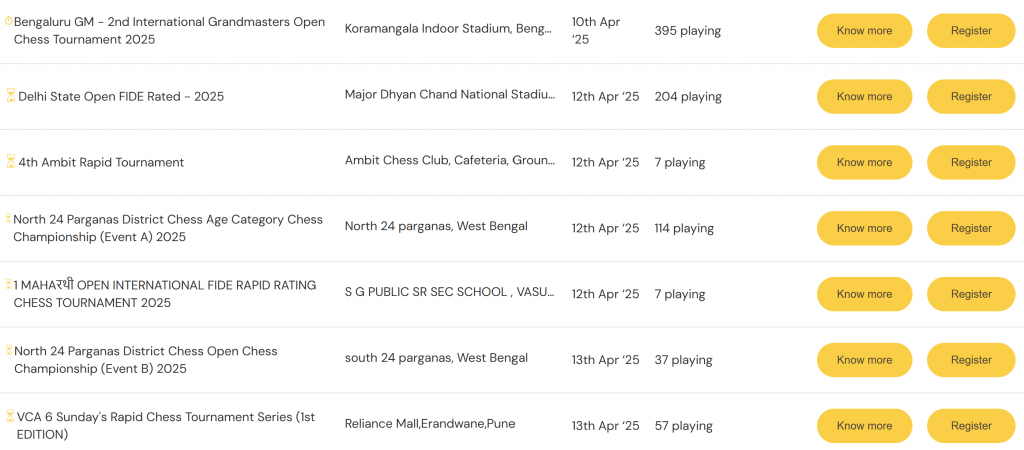For those just starting out or aiming to climb the ranks, understanding your ELO rating in chess provides insight into your skill level and progress over time. The ELO system is a standardized rating metric in chess that measures a player’s performance against other opponents, helping you gauge your current abilities. While official ELO ratings are assigned through tournament play, there are multiple ways to estimate your rating, from online platforms to self-assessment techniques.
What is ELO Rating in Chess?
Developed by Dr. Arpad Elo, the ELO rating system assesses a player’s chess strength based on their results against other rated players. Chess organizations like FIDE and the US Chess Federation widely use this rating system to quantify skill levels, making it easier to track progress, compare strengths, and identify areas for improvement.
Knowing your approximate ELO rating can be incredibly motivating. It serves as a benchmark for improvement, helping you focus on specific aspects of your game to climb the ranks.
How To Check My ELO Rating Through Online Platforms?
One of the easiest ways to gauge your ELO rating is through online chess platforms that provide estimated ratings. These platforms use algorithms to track your games and assign ratings based on your performance.
1. Web Platforms
Chess websites like Chess.com, Lichess, and Chess24 offer a straightforward approach to viewing your ELO rating. To get started, simply log into one of these platforms, play a few games, and allow the system to calculate your rating based on your wins, losses, and draws.
- Steps to Access Ratings:
- Log in to your account on the platform (e.g., Chess.com or Lichess).
- Go to your profile page or stats section.
- Look for the rating displayed under your profile picture or within your stats summary.
Online platforms usually display different types of ratings, including blitz, bullet, rapid, and classical, each calculated separately based on game format.
2. Mobile Apps
Most chess platforms have mobile apps that allow you to view and track your rating on the go. The steps to access your rating on mobile are similar to the web:
- Steps for Mobile:
- Open the chess app and log in to your account.
- Go to your profile or statistics section.
- View your rating across different game types, displayed in the “Stats” or “Rating” tab.
Mobile platforms are convenient for monitoring your rating anytime, anywhere, and some even offer notifications when you reach new rating milestones.
How To Calculate My Elo Rating Through Self-Assessment Techniques?

If you don’t have access to rated opponents or prefer a non-digital method, self-assessment techniques can be useful for estimating your ELO rating in chess.
1. Playing Against Known Rated Opponents
One approach is to play games against friends or players with known ELO ratings. By comparing your results with theirs, you can get a general sense of your rating. For example, if you’re consistently winning against players rated around 1200, your ELO may be close to or above that level.
2. Playing Against Known Rated Opponents
Several online tools and questionnaires, like Chess.com’s ELO estimation quizzes, assess your rating based on your responses to hypothetical game situations or questions about your chess knowledge. While these tools don’t replace actual gameplay, they provide a quick estimation that you can use as a baseline.
Playing Chess Against Computers
Playing against AI-powered chess engines can also help estimate your ELO rating. Many chess platforms have adjustable computer opponents that allow you to set specific difficulty levels to match certain ELO ratings.
1. Setting Up Games Against AI
Most platforms let you choose a computer opponent with a known ELO rating in chess. For instance, Chess.com and Lichess offer AI opponents ranging from beginner levels (around 800 ELO) to advanced levels (up to 2500+ ELO).
- Steps:
- Select an AI opponent with a specific ELO rating (e.g., 1200, 1600, 2000).
- Play several games to see how well you perform against that level.
Consistently winning against an AI set to 1400 ELO, for example, indicates that your estimated ELO might be higher than that.
2. Tracking Performance Over Multiple Games
To obtain a more accurate rating, play a series of games against various AI levels, noting your win-loss ratio. This method helps you gauge your consistency and refine your estimated ELO based on repeated results.
Can I get ELO Rating by Participating in Chess Tournaments?
Yes, one of the best ways to gain an official ELO rating in chess is through tournament play, where games are typically rated and tracked.
1. Joining Local or Online Tournaments
Many local chess clubs and online platforms host rated tournaments that assign provisional ratings based on performance. Even if you don’t receive a formal rating, your placement in these tournaments can provide an estimated ELO.
- Steps:
- Register for a local chess tournament or join an online tournament on platforms like Chess.com or Lichess.
- After the tournament, review your win-loss record and compare it to the average ratings of your opponents.
2. Understanding Tournament Formats and Their Impact on ELO
- Tournament formats, such as Swiss or Round-Robin, affect how ratings are calculated. Swiss tournaments often pair players of similar ratings, which can provide a more accurate estimate of your skill level as you progress.
Analyzing Game History

Analyzing your past games is an insightful way to estimate your ELO and track improvement. Examining your moves, strategies, and mistakes provides context for understanding your rating progression.
1. Reviewing Past Games with Performance Analysis
Platforms like Chess.com and Lichess allow you to review completed games with performance insights. By analyzing your move accuracy, blunders, and critical decisions, you can assess whether your play style aligns with a particular ELO level.
2. Using Historical Performance Trends
Tracking how your performance has improved over time helps you estimate your current ELO relative to your past ratings. For instance, if your play has become more accurate over months of consistent practice, you’re likely making progress toward a higher estimated ELO rating in chess.
Online Rating Calculators
For those who prefer a mathematical approach, online ELO calculators can estimate your rating based on specific game data.
1. Introduction to ELO Calculators
ELO calculators are tools that estimate your rating by inputting details about recent games, such as opponent ratings and outcomes. These calculators use ELO algorithms similar to those employed by official chess federations.
Elo Rating Change Calculator
This section will calculate the change in a player's Elo rating after playing a single game against another player. The value K is the maximum change in rating.2. Inputting Game Data and Understanding Estimated Outcome
By entering the ratings of your opponents and the results of each game, the calculator provides an estimated ELO based on the traditional ELO formula. This method can be useful for players who want a calculated estimate without relying on platforms or external assessments.
Finding Your Estimated ELO Rating in Chess
Estimating your ELO rating requires a combination of practice, analysis, and varied methods. Online platforms provide quick estimates through gameplay, while self-assessment, AI matches, tournament participation, game analysis, and calculators each add layers of accuracy to your estimate.
To obtain a well-rounded view of your rating, try using a mix of these methods regularly. By staying engaged with your rating and monitoring your progress, you’ll gain a clear sense of improvement over time and stay motivated to achieve your goals.
Ready to test your skills in a competitive setting? Register with CircleChess to participate in local and online chess tournaments designed for players of all levels. It offers a range of tournament formats, including Swiss and Round-Robin, to help you earn an estimated ELO rating in chess and track your progress.

Join today and take your first step into the world of rated chess!





